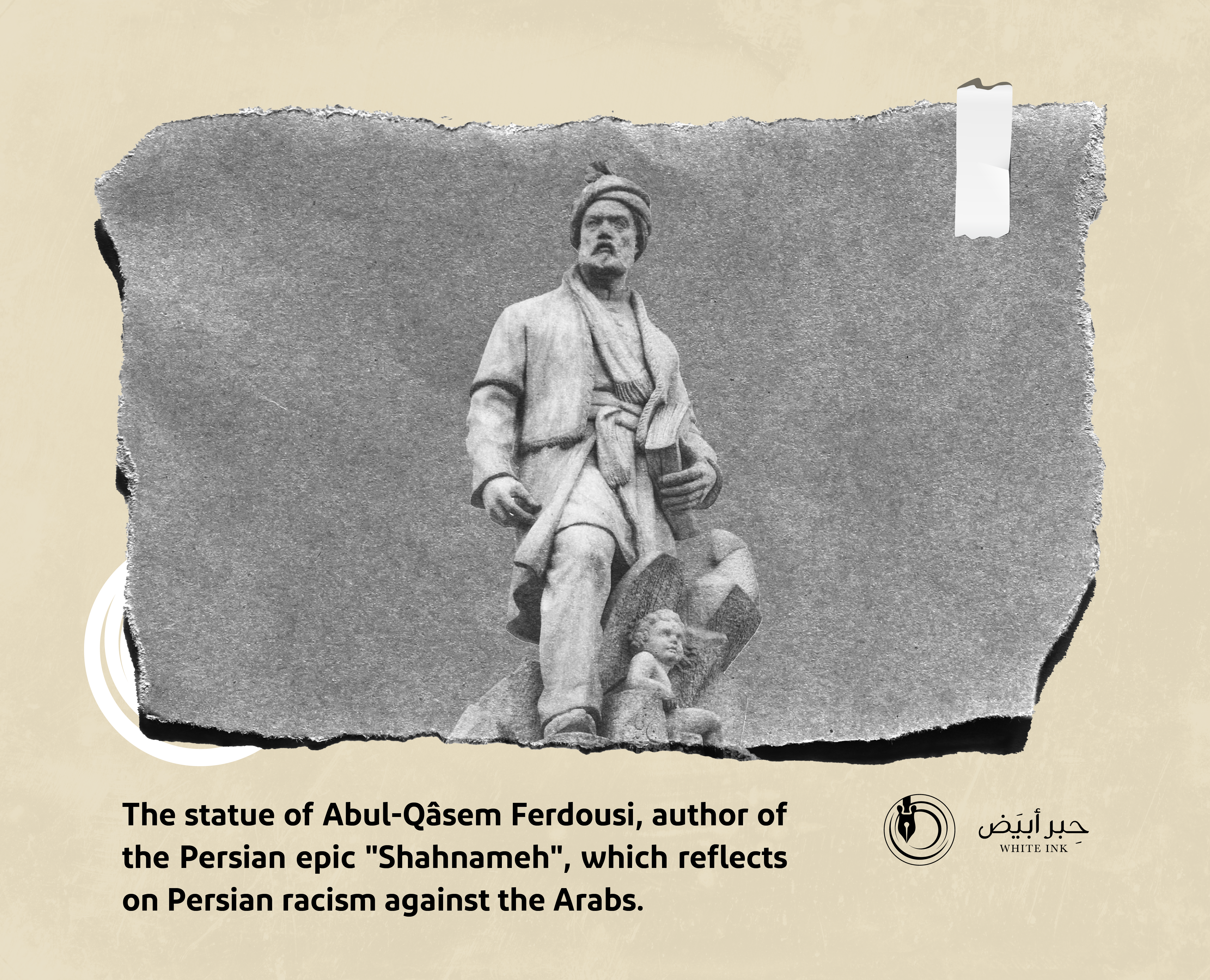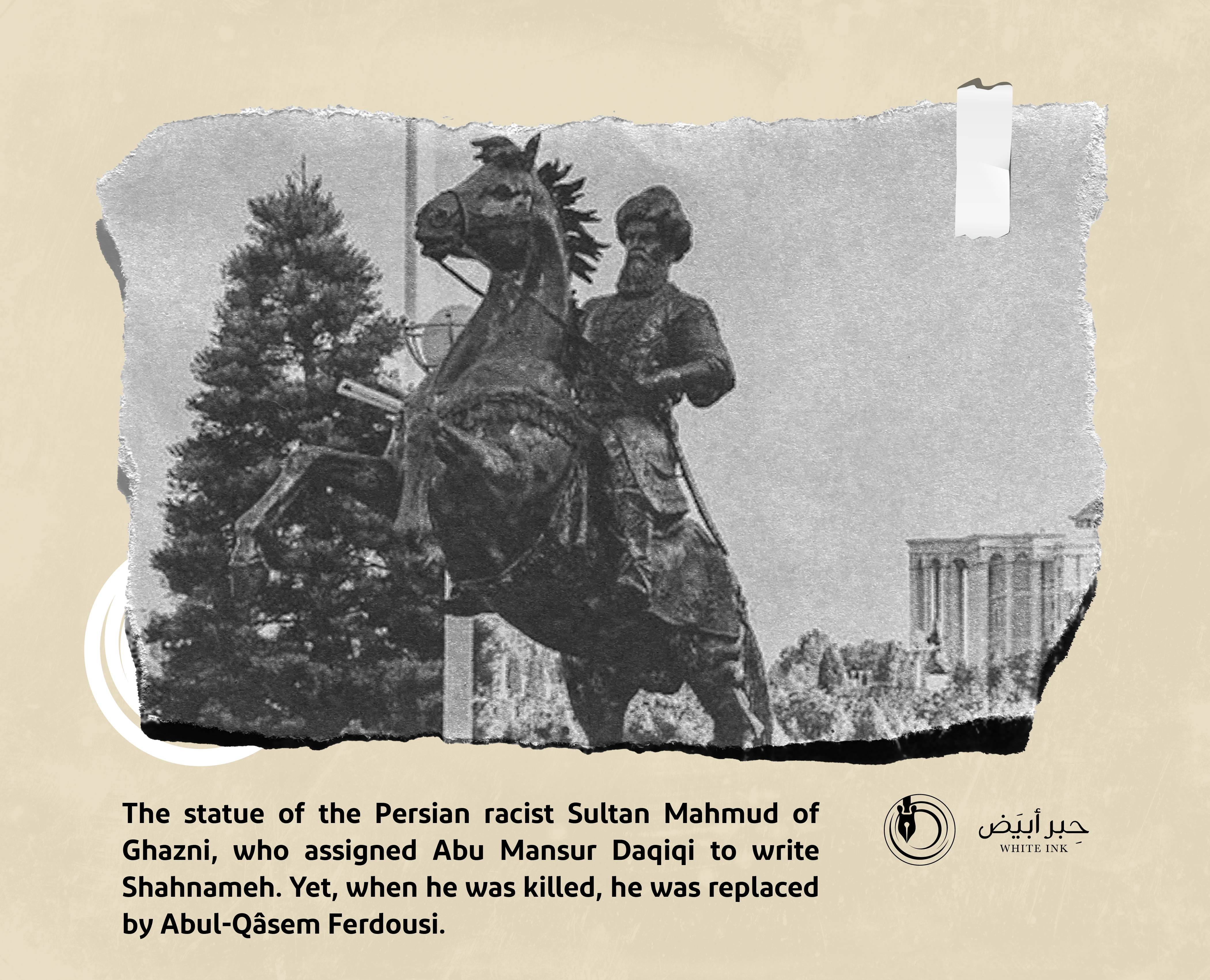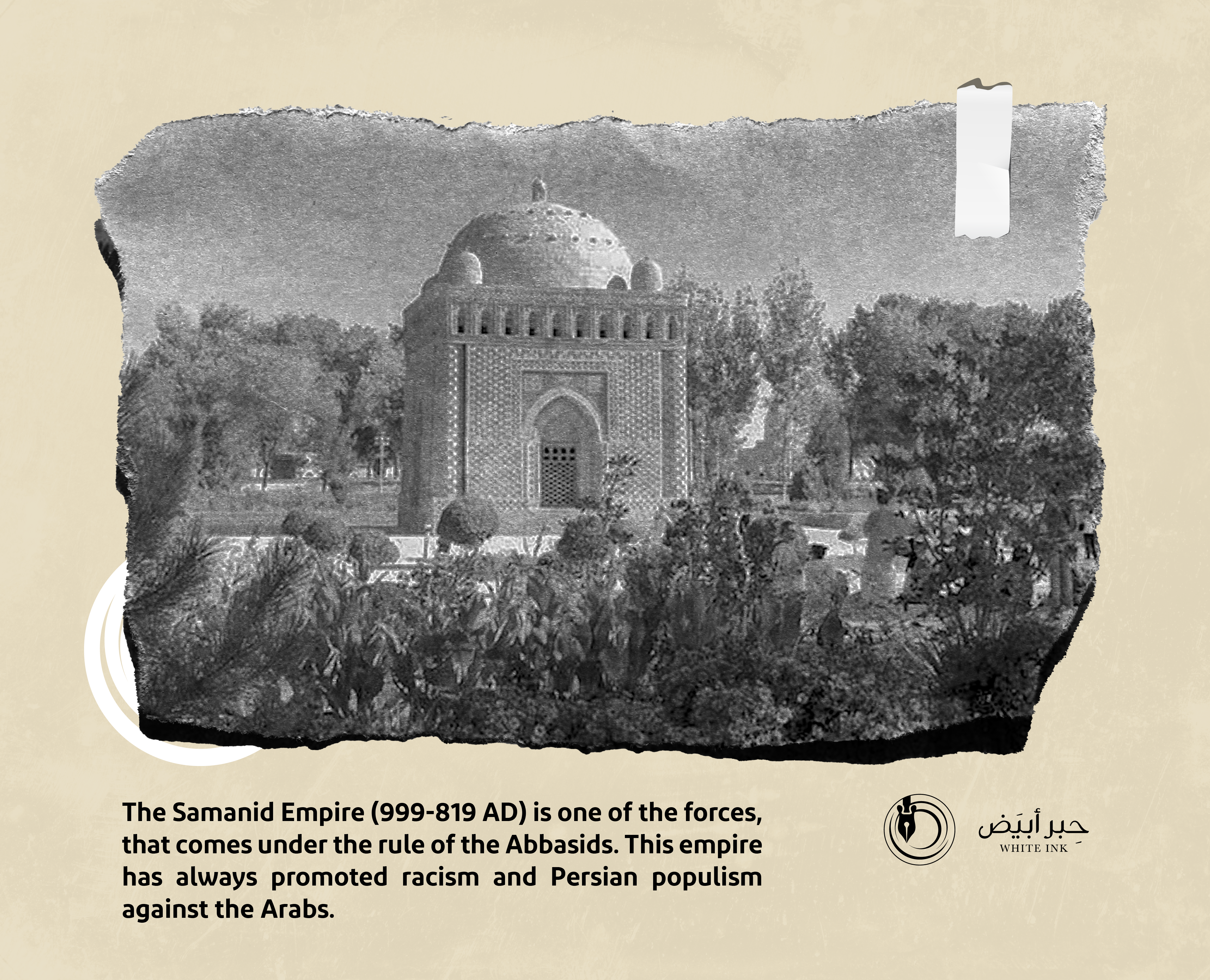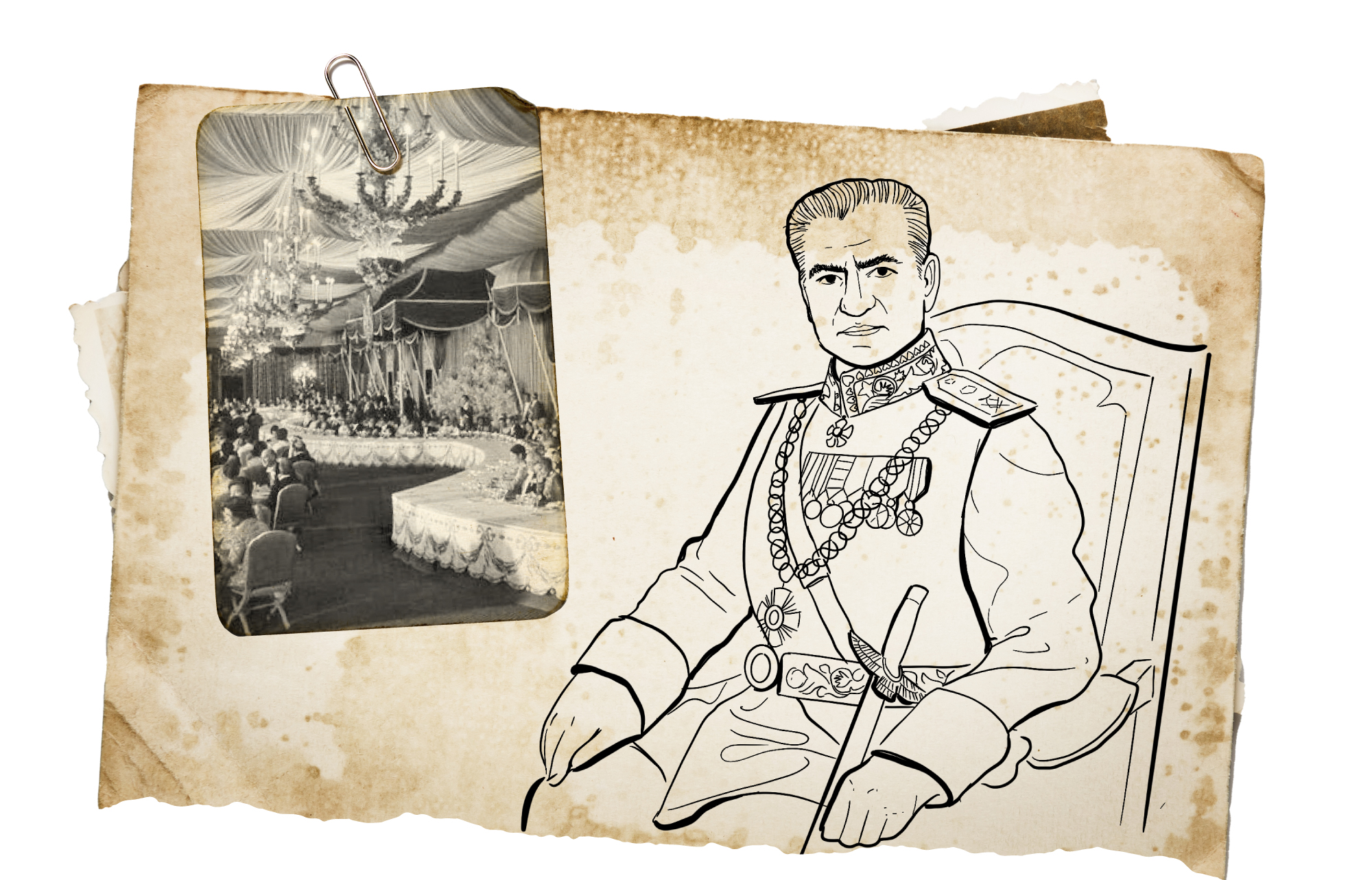
Translating the dilemma of the Iranian national mindset
The Populist Abdolhossein Zarrin: The first two centuries, when Islam entered Persia, have been described as centuries of total silence, ignorance and cultural oppression.
None of the Persians dared to criticize Islam openly, but they circumvented and replaced that criticism by reducing the Arab personality, attacking it, and accusing it of false things because, as they claimed, “Persian culture was swept, suppressed, and dried up .” The above is not a saying of an Arab thinker, but it is said by the Iranian Abdolhossein Zarrin.
It is not an exaggeration to say that the racist Persian fanatic eager for her “Zoroastrian” legacy, still permeates the Persian conscience, and perhaps the closest description of the intertwined “Persian-Iranian” situation in its current form is: There are two countries in Iran, serving one another. Each of which has its own role to play without colliding with the other. And, they work in parallel to the interests of the Persian legacy.
The first state is: a reactionary doctrinal state, deeply soaked in myth. It mixes many ancient rituals and presents them as Islamic, with the aim of owning emotion, seizing feelings and moving loyalty towards Tehran.
The second state is : a racist Persian. It uses the results of the first to achieve and deepen Persian tendency in the Iranian soul and keep it alive, and works to restore the Persian Empire. The existence of the first state is only a phased existence, which ends completely with the culmination of the second Persian state.
This is not a fantasy. The last king of Iran, Mohammad Reza Pahlavi, has done it. On October 12-14 (1971), the Shah has held a huge celebration on the anniversary of the 2,500th anniversary of the Persian Empire. The ceremony has taken place amid the ruins of the ancient city of Persepolis near the mausoleum of the first Eminian Persian king, Cyrus, founder of the Persian Empire. It has been held in a time when the Persians have become ready to reclaim the empire’s dream, but the world was not ready to accept this Persian absurdity at the time.
Shah Mohammad Reza Pahlavi wanted to get out of the Arab complex in (1971) through celebrating the anniversary of the first Persian Empire, which has existed 2,500 years ago, at the tomb of "Cyrus".

Subtle accusation of Arabs and Islam:
“The first two centuries of Islam’s entry into Persia has been considered to be centuries of silence, ignorance, and cultural oppression,” says the Iranian nationalist Iranian Abdolhossein Zarrin, in his book Two Centuries of Silence. What he has said is a way of viewing Arabs in Iran. They perceive the Arab conquerors as backward with nothing to offer, and it is claimed that the Arabs have attempted to abolish the use of Persian languages, and, instead, have imposed Arabic. This, as claimed, has forced the Persians to lay low, and, hence, the seize of any literary work, during these two hundred years. And, they have linked the end of the first two centuries of Islam with Al-Ma’mun’s rule over the Abbasid state, during which they have become able to hold certain positions, which may serve them in recovering their alleged identity.
Describing the rise the Persian extremists to power, replacing the Arabs, and specifically at the end of the era of Harun al-Rashid, the Jordanian researcher Khalid Bashir comments: “The impact of the victory news of Al-Ma’mun, and his supporters from the Persians, on his brother, Al-Amin, together with the Persians reaching the highest positions in the army and in the Abbasid palace, have helped in the resurrection of Persian nationalism. Rather, Abdolhossein Zarrin has referred to the Abbasid civilization as a Persian civilization with excellence.” Besides, Bashir describes populism saying: “At the level of intellectual and literary movement, the new stage witnessed the emergence of the currently- known as the populism, which tried to argue and refute the saying of the Arabs’ superiority ‘. It is considered a reaction to the Arab nationalist theories, which were rhetorical and prevailed throughout the Amoric era. The Populist movement remained proud of the Persian heritage, and called for the precedence of other peoples over the Arabs. Moreover, as mentioned in the book of misers by Al-Jahiz, some of these populists may go even further, like the Azademrdiyah group, who believe in the Persian superiority over the Arabs. He points out that this group is the most ever bigoted group, to support the Persians.
The entanglement of the Arab-Persian relationship:
The novelist and writer Ahmed Fal analyzes Abdolhossein Zarrin’s book “Two Centuries of Silence,”stressing the entanglement of the Persian-Arab relationship and the Persian bias against it: “Whoever reads the book understands that it is set to get out of an annoying historical stalemate for the Iranian nationalist mentality. Persian myths exaggerate the scientific and cultural reality of Persia before Islam, but reality and careful study does not support this image, that prevailed in the national mind. Therefore, the author reintroduced the edition before us and modified great parts of the book, admitting that it was full of racism and mistakes. This is for his inability to acknowledge Iran’s mistakes or defeat. Although the copy in our hands is a modified version – admittedly by the author – it contains enough racism and avoids scientific honesty, and perhaps those, who read the book and see how its owner makes the dangerous fabricated judgments, will understand why the book has not been not translated into other languages, as it has not been translated into English, for example, until fifty years later. “
Reversal of the Arab persecution hypothesis of Persian culture:
In his attempt to refute the theory of Arabs; racism against the Persian culture, Ahmed Fall says: “Contemporary historical research does not support the existence of significant literary works in ancient Persian. Most scholars, who are even fond of Persia: its history, literature, and music, like Richard Fry, Harvard professor, have acknowledged this. He believes that it is difficult for the researcher to find any evidence of the existence of Iranian writings before Islam, especially compared to the Romans and the Greeks. Despite the large number of excavations and translations, and the existence of generous support for research, the people have not found any evidence of the existence of serious literary texts dating back to before Islam. What has been found is an almost incidental pattern of dealing with a Khosrow, and his train, and other of Khosrow’s pagan- political traditions. As for the examples of poetry, and prose, they have only appeared under the shade of Islam because it is an Islamic product provoked by the new religious spirit, and fed by the spread of science and education brought by the new religion. Hence, the outcome is the linguistic ability combining with a new poetic language that has reached them from the Arab desert. In the face of this cognitive reality, the national mind has been caught in a dilemma resulting from two facts. ” The first is: the absence of literary or scientific texts written in ancient Persian, and the second is: the emergence of the Persian-Islamic language as one of the finest, sweetest, which produced writers who lived under the Islamic State and produced great creative wroks such as Sinai, Hafiz, Saadi, Khiam and Rumi.
These two facts annoy the national mind that is anti-Islamic. To illustrate, they may be concluded by saying: Islam is the one that has given the Persian language its philosophical depth and stylistic sweetness, that is, after Islam has touched the passion of the Persian soul, mixed the Persian language with Arabic, the result is a great, poetic language that has amazed the whole world. And to get out of this stalemate, the Persian nationalists assumed the existence of sophisticated but lost literature. Yet, Fal quotes the Iranian historian’s saying on the Arabs and disparaging them:
“At a time when the poems, dedicated for Barbar and Ngesa, filled the Sasanian palace with fresh sounds, the Arabs’s poetry has been deficient and poor. If a sound is heard in the desert, it is a thief’s terror! Their words carried no guidance, and no emotion. Their poetry is centered around Gambling, and the parts of camels. On the other hand, the Iranian languages are full of meaningful, philosophical and beautiful words. The Iranians keep reading religious books, singing heavenly songs, and writing stories about their kings. They appreciate the beautiful word. ”


- Ahmed Faluddin, “Two Centuries of Silence: The conquerors were generations, they fought Persian, and imposed Arabic by force”, published at the “site” (D.T.), on the link:http://www.almawqi.com/2019/03/04/2cofc/.
- Paddy Bedetti, Korsh Kabir (Tehran: Danshkah Spreads, 1335AH).
- Khalid Bashir, “How Does Persians perceive the Arabs?”, Fossils Website (2020), at: https://hafryat.com.
- Mohammed Al-Salami, The Arab Other in Modern Iranian Thought (Riyadh: International Institute for Iranian Studies, 2018).
- Homa Katouzian, The Persians: Iran in the Ancient, Medieval and Modern Times, translated by: Ahmad Hassan Al-Ma’ini (Beirut: DarJadoul, 2014).
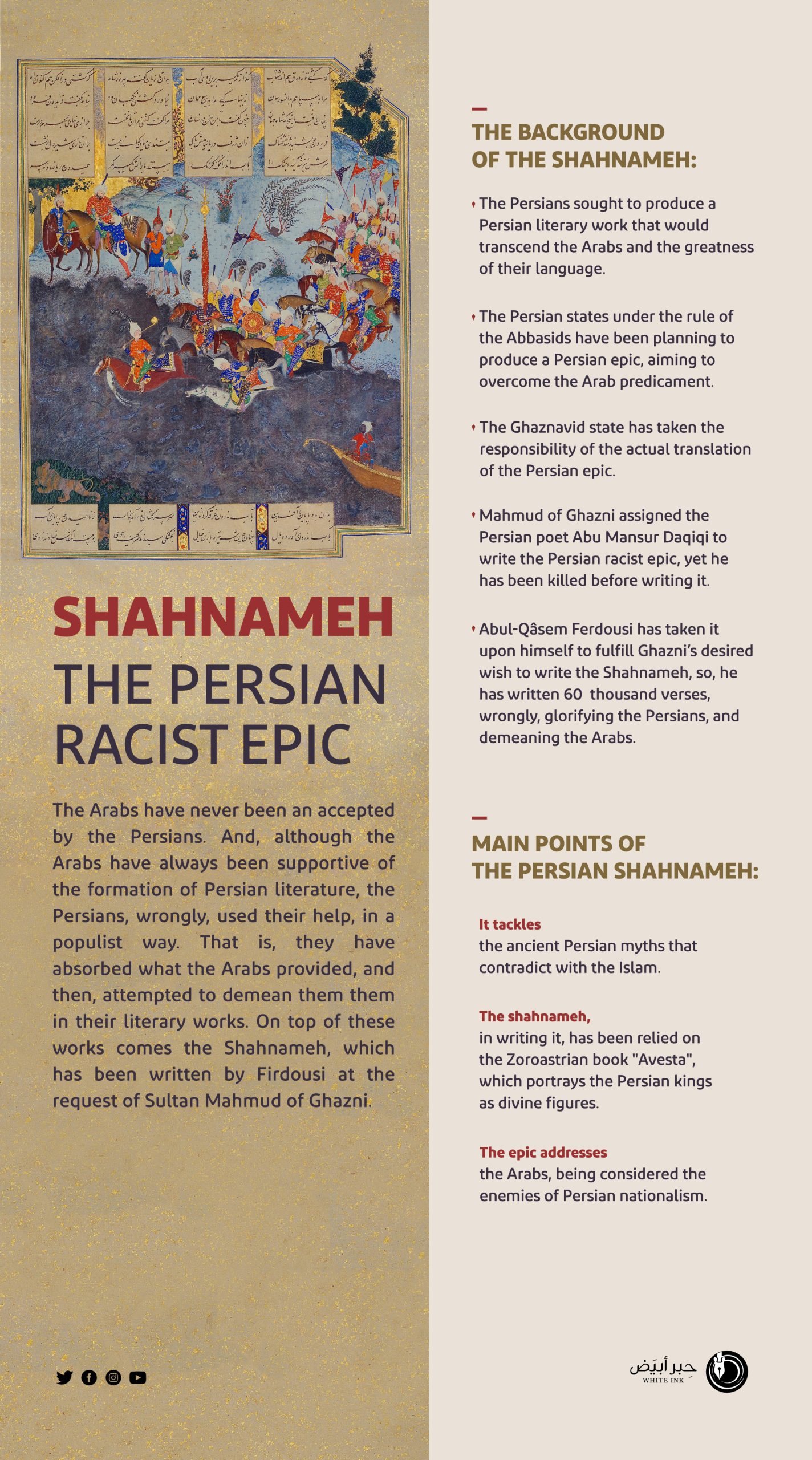
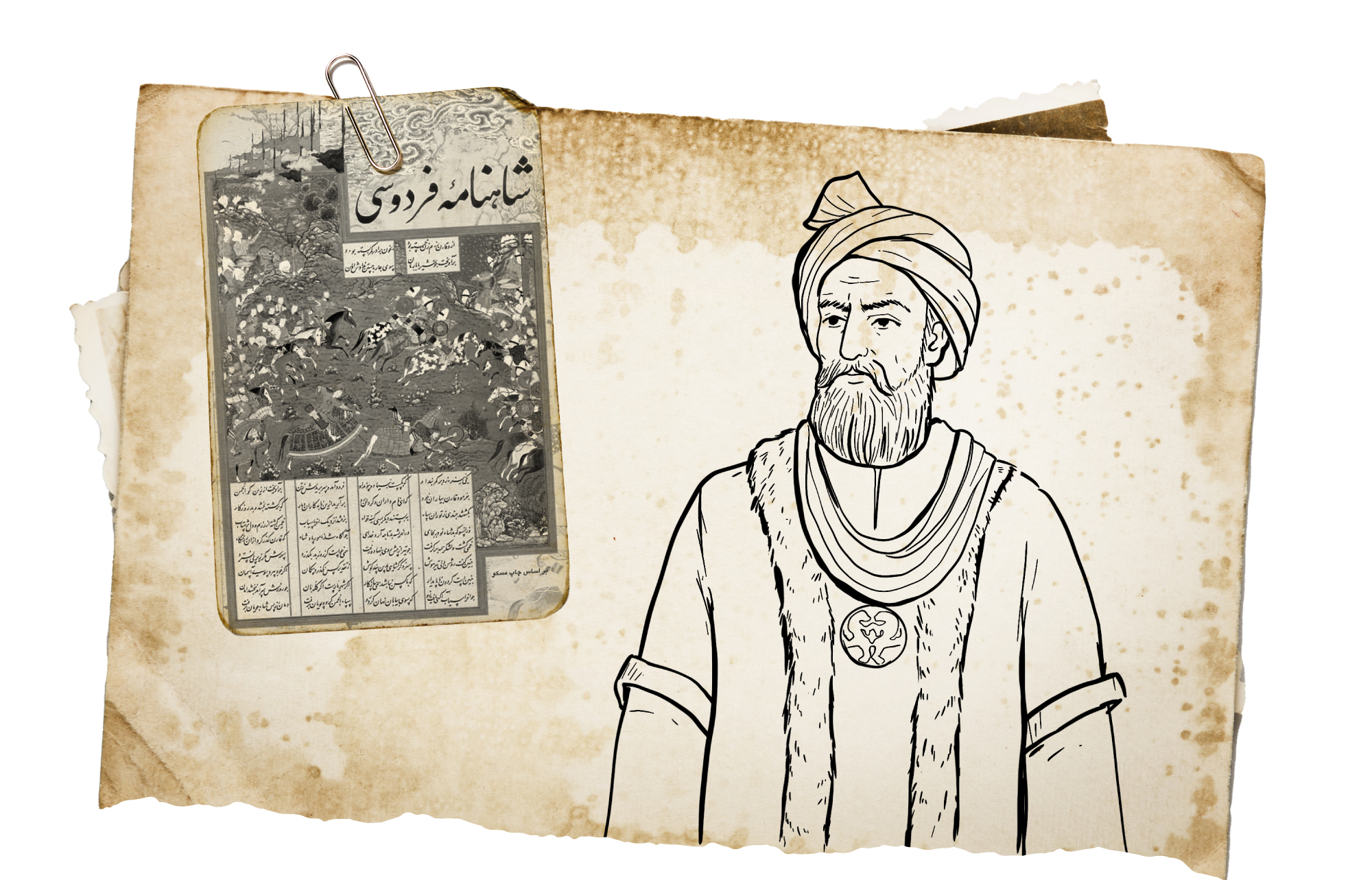
With the aim of legitimizing abnormal human behavior:
The Persians turned their hatred against the Arabs into a behavioral and religious belief
The Persians were not satisfied with showing their ethnic superiority against the Arabs in the battlefields and strongholds of hatred, but also decided to show this hatred in major works and manuscripts. Thus, this hatred turned into a behavioral and religious belief that was rooted later with some religious texts with the aim of legitimizing abnormal human behavior that religion tried to correct and the Arabs resisted.
In this context, the Persians worked hard to compose a group of productions that refer to a superior belief and an abnormal racist pattern, which made it difficult for the attempts of rapprochement between the two parties to be successful, especially after some Persians considered hostility to the Arabs a religious duty and doctrinal discipline.
Since it is difficult to monitor all the writings that dealt with the Arabs in a degrading manner, we will refer to one of the most important references of the Persians, which has been elevated to the rank of the greatest Persian literature of all times. We refer to “The Shahnameh Epic” which was gifted by Abu Al-Qasim Al-Ferdowsi to Sultan Mahmud Ghaznavi. It is a collection of the Persian epics until the collapse of the Sassanid state.
If researchers have doubted some of Al-Ferdowsi’s narrations, especially those related to the ancient history of the Persians, what concerns us in this article is to monitor that racism and arrogance of the Persians, which remains the basis in all the verses written by the poet in this epic (about 60,000 verses).
Since the ancient Persian history, there has been a state of arrogance and hatred against the Arabs, including the belief of hatred that was previously referred to and which Shapur II (Shapur with the shoulders) adopted towards the Arabs. After thirty years of his rule and his age, he prepared to invade the Arab countries and ordered the killing of the Arabs, so they killed many of them. He said: Whoever you find, cut off his hands and remove his shoulders. They did so, and because of this, the Arabs called him Shapur with the shoulders.
It seems that this arrogant belief was the basis for the Persians’ dealings with the Arabs for centuries, especially with the advent of Islam and the message of the Prophet Muhammad. The Persians rejected it, not because of its content, but rather because of the nature of the race responsible for the message of Islam. Here, the Persians saw that if they accepted Islam, this would be considered a recognition of the status of the Arabs as the legitimate responsible for the new religion and an honor for them from Allah Almighty, who knows where to place his message.
In this context, the message of the military commander Rustam Ibn Hormizd to Saad Ibn Abi Waqqas reflects that psychological state and the arrogance of that Persian belief towards the Arabs. The following was stated in the text of the message: “From Rustam Ibn Hormizd to Saad Ibn Abi Waqqas. Let me know what your religion is, who is your sultan, and what is your goal! You came with barefoot soldiers, and you did not bring equipment, supplies, or an elephant with you. Because of your drinking of camel’s milk and eating wild beasts, you reached the point of wishing to take the rule of the Persian kings, the owners of crowns”.
Through this message, we deduce the image that the Persians created about the Arabs. Although Rustam had predicted the supremacy of the Arabs and the retreat of the Persians, we find him saying in the same message: “Come to service the king in order to see his wealth and his kingdom. If he smiles, he will endow what is equivalent to everything that all the Arabs own, and this is considered nothing of what he has. He is the one who has twelve thousand predatory beasts with collars of gold, and their expenditure for one year exceed all what the Arab countries own”.
Abu Al-Qasim Al-Ferdowsi, the author of the Shahnameh epic, received nothing but denial and ingratitude from the Persians.

Al-Ferdowsi received nothing from this epic but ingratitude and denial from the Persians, so he mourned the effort and wept over the past of his life. He said with sadness: “After sixty-five years of my life, I am sitting sad and I received nothing but the word “well done”. the truth has been denied. I’m running out of patience and my spirits got worse. I faced a lot and endured so that I was able to write this book in a period of thirty years, the last of which was 384 AH”.
This was what happened to those who praised the Persian kings and wrote a lot about the legends of glory and kingdom. So, what will happen to those who want to replace the pride and eloquence of the Arabs with an ethnic arrogant regime that sees its followers from our sons as mere tools to serve the agendas of the wise men of Persia, and then their fate will be the dustbins of history while saying: “Oh, woe to me! I wish I had not taken that one as a friend”.
Providing the heritage books with these racist ethnic residues contributes to the formation of the Persian creed of malice and hatred towards the Arabs. If Trotsky had argued that “hatred is the easiest tool of the class struggle”, the Persians made hatred one of the most dangerous weapons of the ethnic and dogmatic struggle alike.


- Abu Al-Qasim Al-Ferdowsi, The Shahnameh Epic, translated by: Al-Fath ibn Ali Al-Bendari (Cairo: Egyptian Book House Press, 1932).
- Muhammad Al-Salami, The Arab Other in Modern Iranian Thought (Riyadh: International Institute for Iranian Studies, 2018).
- Raif Khoury, With the Arabs in History and Legend (Cairo: Hindawi Foundation, 2019).
- Abd Al-Wahhab Azzam, The Links between Arabs and Persians and Their literature in Pre-Islamic Times and Islam (Cairo: Hindawi Foundation, 2012).
- Homa Katouzian, The Persians: Iran in the Ancient, Medieval and Modern Times, translated by: Ahmed Hassan Al-Ma’ini (Beirut: Dar Jadawel, 2014).
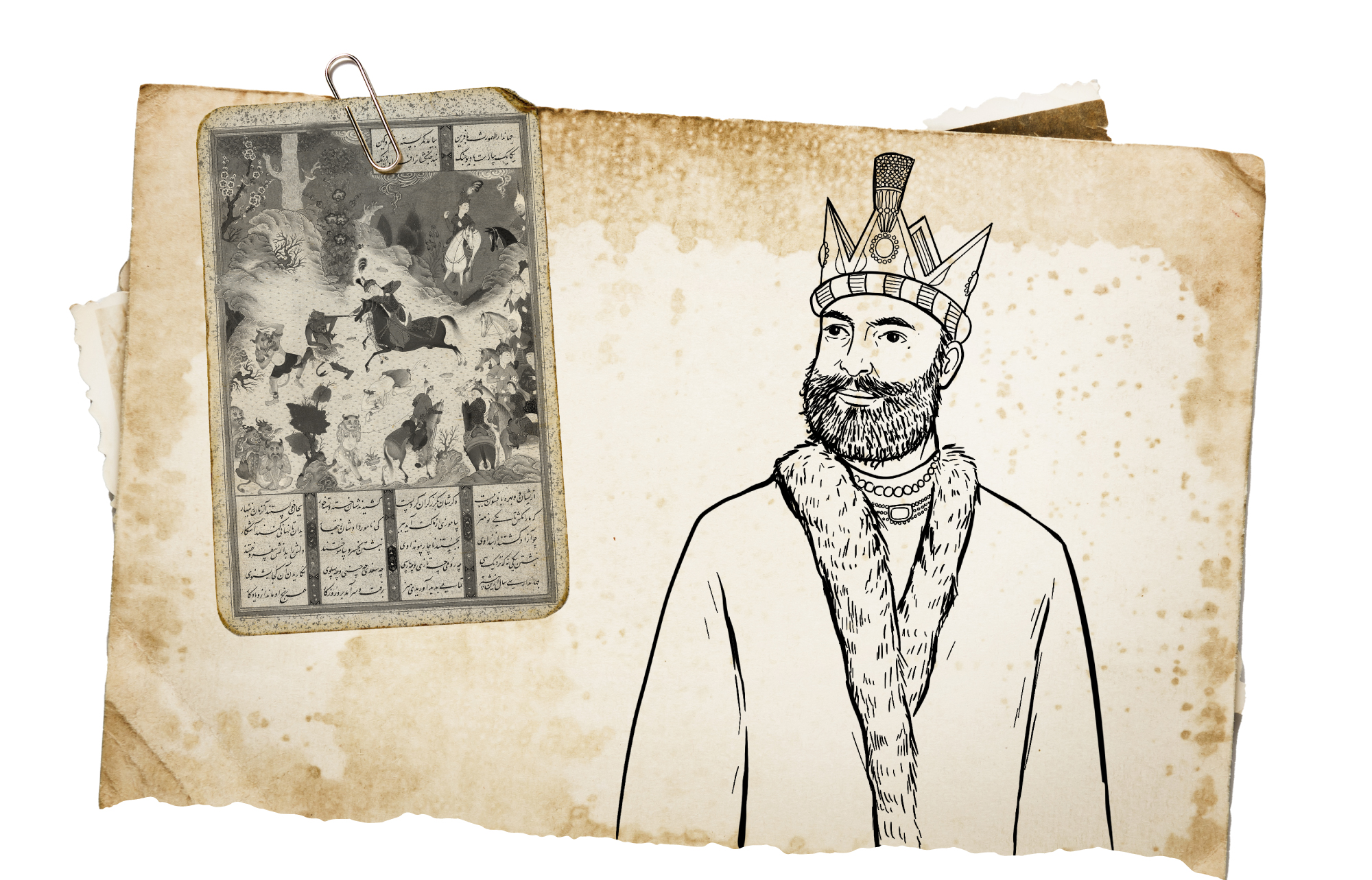
Using historical fallacies and racist grudges
Al-Ferdowsi showed the populism of the Persians against the Arabs in “The Shahnameh”
Poetry had a great importance for the Persians, especially after they entered Islam. Some Persian researchers believe that poetry did not develop and take its high place in their society until after the advent of Islam. Their poetry did not go beyond the popular poetry known as “Pahlavi poetry”, which is considered as poor poetry written in the Pahlavi or ancient Persian language. After the conquest of Persia, the Persians were influenced by Islam, Arab culture and Arab literature. In fact, Islam and Arabism are two synonymous concepts, so the Persians embraced Islam apparently and reluctantly. They worked to fabricate seditions and intrigues until they introduced falsehood, heresies and delusions to Islam.
The Iraqi historian Abdul Aziz Al-Douri says: “In the Abbasid era, the Persians moved widely with a racist motive, and their movement represented part of the attempt of non-Arab peoples to overthrow the Arab rule. This matter appeared in the political, cultural and religious conflict carried out by the extremist Persian elements in their hostility to the Arabs and Islam, and they worked to discredit Islam, belittle the Arabs and degrade their culture”. This Persian approach has continued to the present day.
After Arab culture and literature dominated the Persian thought for more than two centuries, the first populist writings began to provoke Persian hostility against the Arabs when Sultan Mahmud Ghaznavi commissioned the Persian poet Abu Mansour Al-Duqqi Al-Tusi to write poems glorifying the history and civilization of Persia and cursing the Arabs and their civilization. He started writing his epic “The Shahnameh”, but he was killed before completing his work, so Abu Al-Qasim Al-Ferdowsi (died: 1020 AD) completed his work. He is one of the oldest poets who wrote in the Persian language. The work continued for thirty-three consecutive years, in an attempt to compete with the Arabic language, which used to dominate the region with its cultural and literary power. Despite the Persians’ pride to this day in this national epic of Persia, they neglect the fanaticism it contains towards the Arabs in racist forms, which is what the epic was implicated in despite its literary importance. In fact, the book is of great importance to the Persian nationalists. The approach followed by Al-Ferdowsi and other Persian writers was based on sending direct implicit messages offensive to the Arabs and showing them in a bad stereotype through false stories, legends and myths in addition to false poetic epics.
Populism was a Persian approach dedicated by their states, which were established under the auspices of the Abbasids. Its most prominent supporters were the Ghaznavids.

In fact, we can say that the first opportunity for the emergence of the Persian as a language of literature was during the era of the Samanid state (819 – 999 AD), which was famous for its work on reviving Persian nationalism again, then the Ghaznavid state came, and this tendency increased clearly. Al-Ferdowsi wrote his famous epic “The Shahnameh”, which amounted to about sixty thousand verses of poetry, revealing the glories of the Iranian peoples. He decorated it with stories and biographies of epic heroes and characters associated with the history of the Persians, making it the focus of people’s attention in their conversations and songs.
If we take a closer look at that epic, which Iranians are still proud of globally, we will find that its legendary content contradicts what they claim of the Islamic faith. When writing The Shahnameh, Al-Ferdowsi was clearly influenced by The Avesta, which is the first book that includes parts of ancient Persian myths more than three thousand years old and is the oldest written historical document that reflects the ceremonies, ideas and religious rituals of the ancient Iranian society. It portrayed the kings in a state of sanctity that raised them to the rank of gods as a form of influence by Indian and Greek myths, and this work was described as “the holy book of Zoroastrianism”.
An example of that populist and racist tendency of Al-Ferdowsi, who supports racial hatred, is the following saying that he mentioned in his book in his book: “The kings of the Persians all dissented from obedience to their greatest king and were tyrannical. They went to Al-Dahhak, the son of the king of the Arabs, to save them from Jamshid. He only appointed himself as a king over them and went to Jamshid, who fled to India. Al-Dahhak tracked him again and ordered his killing with a saw”. Through that paragraph, Al-Ferdowsi showed the Arab person as if he is treacherous and savage in his dealings with his enemies. Here, we remember “Shapur with the shoulders”, the Sassanid king who brutally stripped the shoulders of the Arabs. Al-Ferdowsi can be described by the Arabic proverb, “You’re living in a glass house and throwing stones”. He also mentioned in another paragraph attacking the Arabs: “Because of your drinking of camel’s milk and eating wild beasts, the Arabs reached the point of wishing to take the rule of the Persian kings”. This shows an arrogant tendency that belittles the Arabs and praises the status of the Persians as masters of history. Despite its historical fallacies and racist grudges against the Arabs, this Persian epic remained present among the Persians and they were proud of it among the nations. They are even more proud of it in the modern era, showing nationalism and racism against Arabs.


- Ahmed Al-Dinouri, The Long News, Investigated by: Abdel Moneim Amer (Cairo: House of Revival of Arab Books, 1960).
- Abu Al-Qasim Al-Ferdowsi, The Shahnameh Epic, translated by: Al-Fath ibn Ali Al-Bendari (Cairo: Egyptian Book House Press, 1932).
- Tawfiq Al-Yuzbaki, The Arabs Confronting the Persians’ Subversive Attempts in the Abbasid Era, Baghdad: Al-Rafidain Journal, Issue 22,1989.
- Hakim Marzouki, The Shahnameh, the first poem in history that was not freed from the framework of Arabic poetry, London: Al-Arab, year 44, Issue 12254, 2021.
- Abdul Aziz Al-Douri, The Historical Roots of Populism (Beirut: Dar al-Tali`a, 1962).


